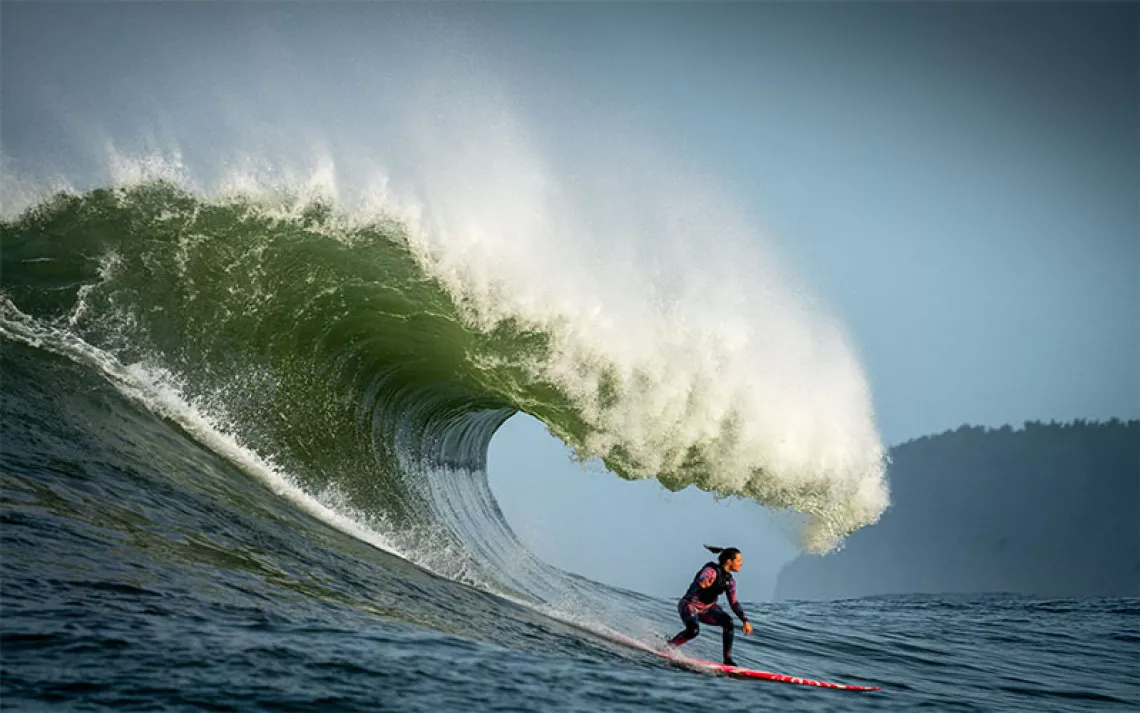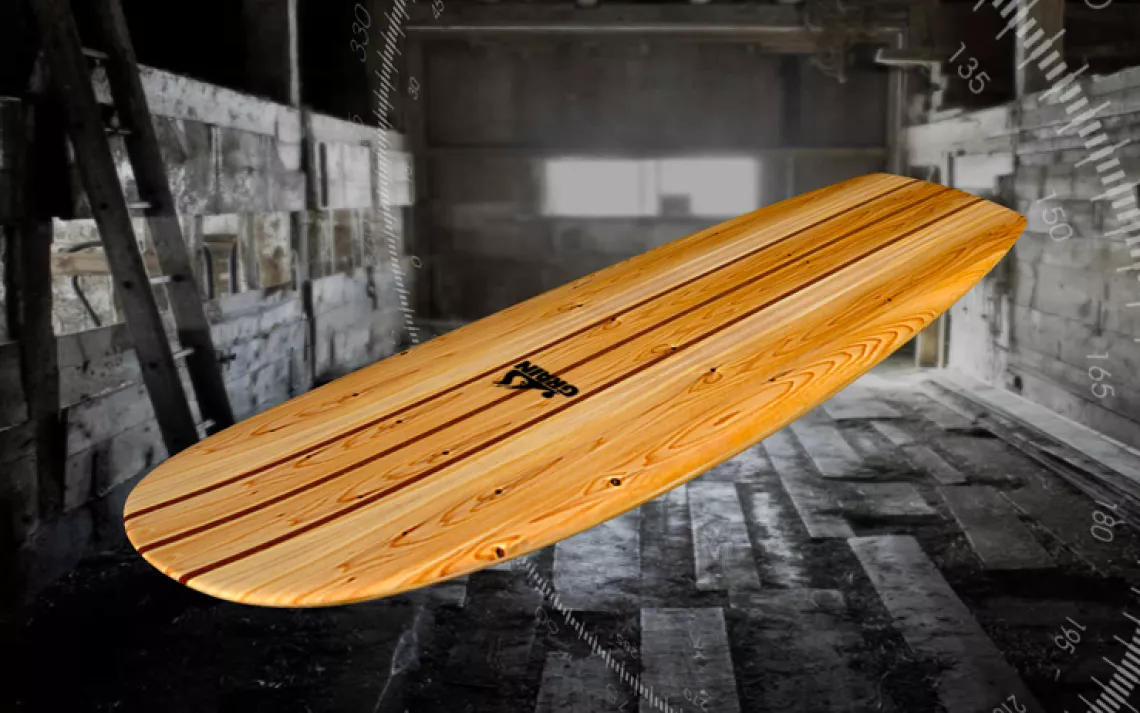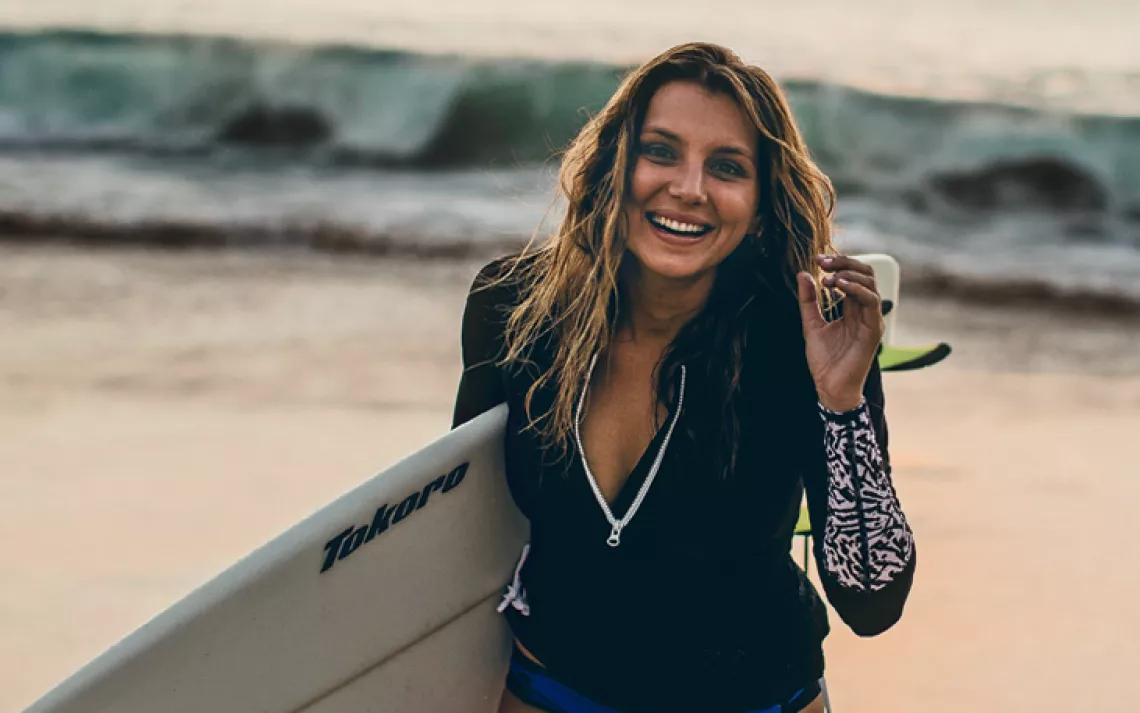Board Games
Meet the pro surfer who’s expanding watersports access for adaptive athletes

Adaptive surfer Christiaan "Otter" Bailey surfs Hawai'i's Pipeline. | Photo by Todd Glasser
Christiaan “Otter” Bailey has faced some of the world's biggest waves, including the swells of Hawai'i's storied Pipeline and the monster breaks of California’s Mavericks. In fact, he’s tackled each as an able-bodied surfer and, later, as an adaptive athlete.
“The feelings I had when I dropped both, those are not experiences I could render in words. Only surfers who have done it can truly know,” Bailey says. “I can say this, though. It's one thing standing up and riding those waves. Riding on your stomach and literally going headfirst, just six inches off the water, is an entirely different and far more terrifying experience.”
 Bailey, a five-time USA Surfing national champion and eight-time International Surfing Association (ISA) medalist, currently serves as captain of the US Olympic and Paralympic Surfing Team. Since 2013, he’s been working with ISA and USA Surfing partners to advocate for para surfing's addition to the Paralympics. Able-bodied surfing makes its Olympic debut at this year’s Tokyo games.
Bailey, a five-time USA Surfing national champion and eight-time International Surfing Association (ISA) medalist, currently serves as captain of the US Olympic and Paralympic Surfing Team. Since 2013, he’s been working with ISA and USA Surfing partners to advocate for para surfing's addition to the Paralympics. Able-bodied surfing makes its Olympic debut at this year’s Tokyo games.
“The ISA is the international governing body of surfing, and we introduced the ISA World Para Surfing Championship in 2015. Since then, we’ve seen an almost 200 percent increase in the number of athletes participating in the event,” Bailey says. “Participation through the various national sport federations is through the roof. It's been incredible to see all these up-and-coming young surfers who are super enthusiastic about being part of their national Paralympic team.”
A competitive surfer since age 11, he understands that enthusiasm on a cellular level. Bailey spent his childhood bouncing between France and the California coast—a self-described "feather on the wind" who loved outdoor adventure. The youngster dabbled in everything from rock climbing and mountain-bike racing to sailing, scuba diving, and skateboarding.
More than anything, though, Bailey loved to surf. His American home base was in Santa Cruz, where Jack O’Neill launched his iconic surf company and top surfers practice at the unpredictable Steamer Lane.
“Santa Cruz has an incredibly deep and legendary surfing and skating history dating back to the foundation of both sports,” Bailey says. "As a kid there, you're born into that world. Surf contests are the barometer by which you’re ranked.”
In addition to surfing and skateboarding competitively as an adult, Bailey also led international surfing safaris. In 2006, he had just returned to Santa Cruz from a Morocco expedition when a friend asked for help with a skateboarding video. Though he was drained after nearly 40 hours of travel, he met the crew at Derby Park and spent an hour completing runs for the camera.

Photo by Dave King
When he launched for his last trick of the day, Bailey blew out a knee and careened through the air. An awkward landing left him with compression fractures on multiple vertebrae. Ultimately, the professional athlete was paralyzed from the waist down.
“That’s when my old life ended and my new life began,” Bailey says.
 He spent the following months adjusting to a wheelchair and relearning basic skills. Still, the sea was never far from his mind. Bailey remembers the first time a friend got him out on the water after the accident.
He spent the following months adjusting to a wheelchair and relearning basic skills. Still, the sea was never far from his mind. Bailey remembers the first time a friend got him out on the water after the accident.
“I had a 1978 Robert August Lightning Bolt single fin, which is this beautiful historical surfboard that I swore I'd never surf. And here I was, being dragged out to Pleasure Point [on the Santa Cruz County coast] and surfing on it,” he says.
Bailey found little equipment available for adaptive surfers, so he started experimenting. Assisted by Eric Roush, a Santa Cruz surfboard shaper who has since retired, he tinkered, tested, and adjusted boards to best suit surfing in a prone position.
“Your average able-bodied surfboard is built under the fundamental paradigm of the surfer standing up and moving around and having the ability to leverage their weight from nose to tail,” Bailey says. “With me lying down on the board, we had to start from scratch. My legs are hanging off the back of the board, and it completely changes the hydrodynamics of the shape.”
As he refined his gear, Bailey also gained strength and set bigger goals. He’d surfed both Mavericks and Pipeline for years before his accident. Tackling those waves as an adaptive athlete felt like the ultimate test.
After two years of training, Bailey made his successful Mavericks return in late 2008. He surfed Pipeline a year later.
“The ocean has a phenomenal healing power and therapeutic energy that's hard to re-create anywhere else,” he says. “The waves are the canvas on which we, as surfers, paint. No matter how bad a day you might be having, all it takes is five minutes in the ocean and the world realigns again.”
As a coach and mentor, Bailey helps amateur adventurers experience nature’s restorative energy. He cofounded an adaptive surfing camp in Costa Rica, for example, and he teaches wheelchair motocross (also known as WCMX) at camps run by the nonprofit AbilityFirst.

Photo by Cathy Mayo
In late 2020, Bailey introduced participants to wheelchair paddleboarding at a clinic organized by the Idaho chapter of the Challenged Athletes Foundation. The event drew injured veterans and individuals living with amputations and other physical obstacles. They took turns paddling on an adaptive board crafted by a Canada-based outdoor adventure company. Wide enough to accommodate a wheelchair, the board features carbon fiber outriggers that provide extra stability.
Bailey watched participants laugh, offer encouragement, and share equipment—even trading prosthetic limbs—as they picked up new paddling skills.
“We'd be in the middle of the water and someone would say, ‘I'm not getting the leverage I want because the articulating joint in my arm prosthetic doesn't bend that way.’ Someone else would say, ‘Here, try mine,’ and then take off an arm and pass it over,” Bailey says. “That's one of the greatest things about this community, collectively. We're always here for each other, and there's no ego involved.”
When working with adaptive athletes, the professional surfer finds young participants to be especially inspiring.
“In many cases, society treats disabled kids like a cracked vase—as if they’ll shatter into a million pieces if they fall. But these kids are mentally and physically stronger than people give them credit for,” Bailey says. “You see them blossom when introduced to an activity. Over time, they get stronger and faster and start branching out into different sports. Fast forward 10 years, and suddenly they're joining Paralympic teams and representing their countries.”
Bailey and fellow para surfing advocates hope to see the sport added to the upcoming Pan American Games schedule, and, ultimately, the Los Angeles 2028 Olympics.
“It would mean everything to these athletes. This is the last great frontier for our sport, and it’s a very rare honor to be a member of a sport’s first Paralympic team,” says Bailey, who plans to compete with Team USA. “For me, it would be a real feather in my cap.”

Courtesy of the Challenged Athletes Foundation
 The Magazine of The Sierra Club
The Magazine of The Sierra Club



